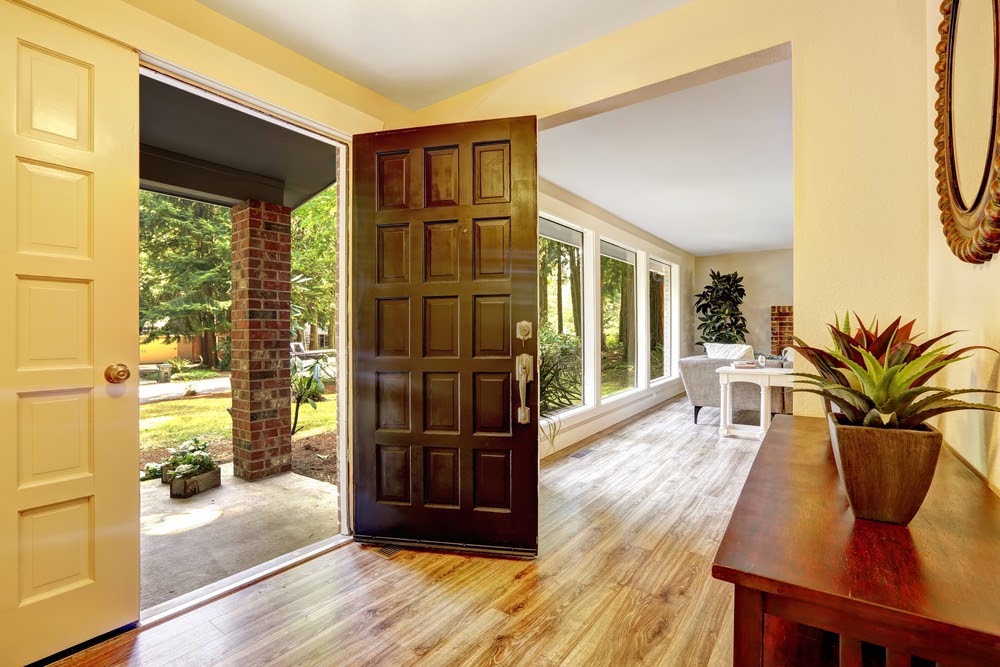Energy-Efficient Exterior Doors Shut Out the Elements
The home is full of spaces and places that can be sources of energy wastes and drains. Doors and windows can feature gaps that let in the elements and cause the HVAC to work harder. Unfortunately, homeowners might not even realize these exits also are doorways to higher energy bills.
Upgrading to energy-efficient exterior doors can help homeowners shut out the outside elements and lock out energy waste. These doors provide better protection against air leaks and can help keep warm air or cold air from the HVAC well insulated.
Not all Doors are Gateways to Energy Waste
Exterior doors are those doors in the home that lead outside. The front door, back door, porch doors and basement doors are all exterior doors. The door that leads to the garage also can be considered an exterior door.
These doors are gateways to energy waste because if they do not provide proper insulation, they can let cold or warm air from outside into the home. Exterior doors are the gateway to the outside space, and, therefore, can expose the home to drafts.
Interior doors are not so problematic. These are the doors that close off rooms in the home…like the bathroom door, bedroom door, etc. While homeowners can consider upgrading these doors to ensure better soundproofing, interior doors aren’t linked to the outdoor space.

Shopping for Energy-Efficient Exterior Doors
Doors can last decades or even centuries, depending on their construction. For this reason, homeowners might not be in any rush to replace an exterior door. However, doors that are poorly constructed might not provide sufficient protection against the outdoor elements.
Exterior doors can have gaps that let in drafts. This causes the HVAC to work harder, and homeowners may notice a higher energy bill. While doors can have a long life, their weather stripping might need to be replaced to ensure that the door offers a protective seal to insulate the home.
In addition, some doors are simply designed to maximize energy-efficiency. The National Fenestration Rating Council (NFRC) provides energy ratings on doors to help homeowners find the best option for their home. In addition, energy-efficient doors also may feature the ENERGY STAR logo.
Different climates have different insulation needs. The NFRC label on doors will include data related to the U-Factor, Solar Heat Gain Coefficient (SHGC), Visible Transmittance and Air Leakage. Here’s more information about each data area and what buyers need to know:
- U-Factor: This measurement is all about how well the door keeps the warm air insulated inside the home. The U-Factor will range from 0.2 to 1.20. Low numbers are better.
- Solar Heat Gain Coefficient: Don’t let the door heat up the home during summer!Numbers will range from 0 to 1. For this measurement, low numbers are best.
- Visible Transmittance: This measures how well light can enter the home; this is a good feature, as homeowners might be able to turn off lamps and overhead lights. Aim for high numbers (the range is also 0 to 1).
- Air Leakage: Doors should not let in outside elements. The range is less than or equal to 0.3. Buyers should look for low air leakage numbers.
Homeowners who want to upgrade to energy-efficient exterior doors can search for ENERGY STAR options by their region. Different climates/regions may have different insulation needs.
Can an Old Door Save Energy?
Doors can—and should!—last a long time. Doors shouldn’t ‘go bad’ or expire. However, the door to a home could be of a lower quality, and homeowners might want to invest in a more energy-efficient door. However, a new door can be expensive and some homeowners might not want to buy a new door.
Can homeowners improve the energy-efficiency of their exterior door? Yes! Replacing the weather-stripping can help ensure that air gaps are properly insulated. In addition, Family Handyman detailed how one homeowner revamped a door to make it more energy-efficient.
While a DIY project might not be ideal for every homeowner, those who are handy or want to improve their door’s insulation and energy-efficiency can tackle the Family Handyman project.
Some homes have a screen door in addition to the standard exterior door. Screen doors might need to be replaced more frequently, and upgrading screen doors can help increase the energy efficiency for the home. However, the screens on the storm or screen door also might simply need to be replaced to help with energy efficiency.

Make Simple Changes, Too!
Upgrading exterior doors to more energy-efficient options can help shut the door on energy waste. However, homeowners also should be mindful of their daily habits that also can impact energy use and waste.
- Don’t leave exterior doors ajar.
- Replace weather stripping on doors/windows.
- Use blinds or window coverings for glass porch doors.
- Install energy-efficient pet doors on exterior doors.
Doors aren’t just a gateway to the home, they also can be a portal to energy waste and drains. Upgrading to energy-efficient exterior doors can help homeowners decrease energy waste…and, hopefully, save money, too.
However, even older doors can offer improved energy efficiency with new weather stripping or other upgrades. Homeowners also can install more energy-efficient pet doors to help add to the insulating protection of those exterior doors.


